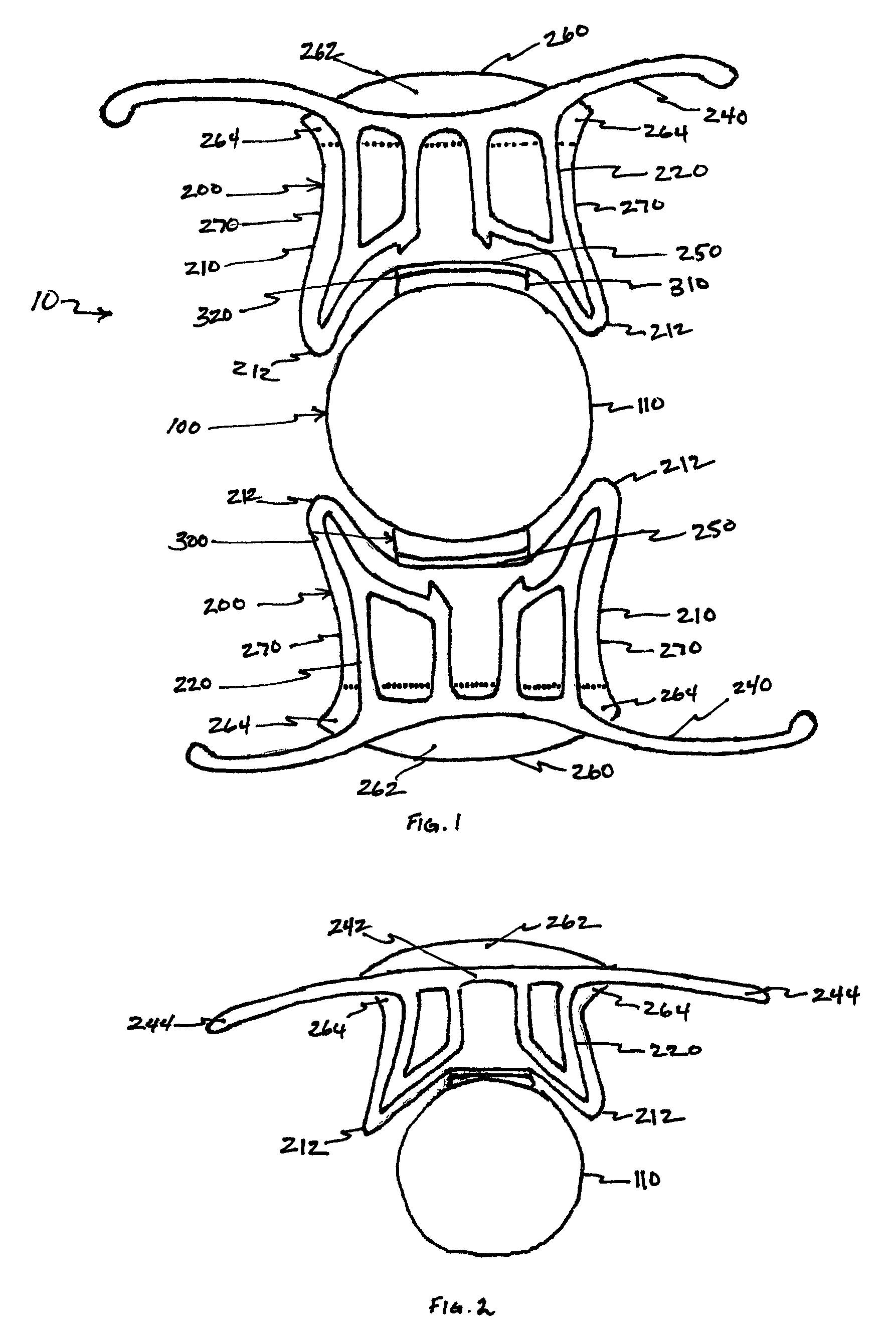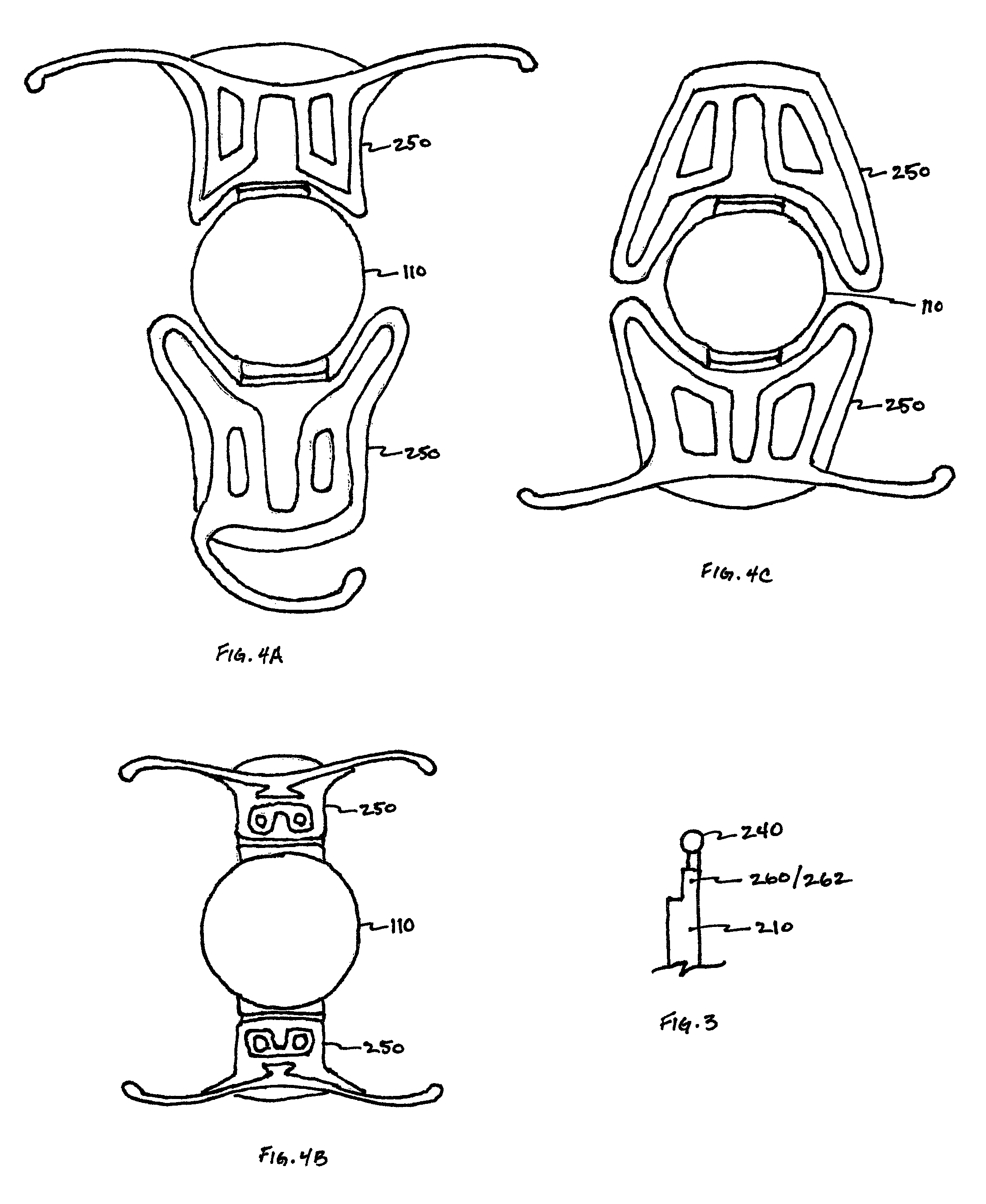Semi-rigid framework for a plate haptic accommodating intraocular lens
a technology of haptic and plate, applied in the field of semi-rigid framework for haptic accommodating intraocular lens, can solve the problems of not allowing adequate movement of the optics and complication, and achieve the effect of increasing the forward movement of the lens optics, reducing the overall length of the hinge, and stabilizing the lens optics
- Summary
- Abstract
- Description
- Claims
- Application Information
AI Technical Summary
Benefits of technology
Problems solved by technology
Method used
Image
Examples
Embodiment Construction
[0011]A plate haptic accommodating intraocular lens design according to an embodiment of the present invention is described that overcomes the deficiencies of present designs noted above.
[0012]A flat, longitudinal accommodating intraocular lens is provided, having distinct separate plate haptics that are rigid longitudinally, but flexible transversely, and that extend to partially surround the optic. The transverse flexibility of the plate haptics permits the accommodating intraocular lens to be folded longitudinally and inserted into the eye via a small incision therein. The longitudinal rigidity of the plate haptics inhibits the buckling or deforming of the plate hatpic during accommodation. Thus, the plate haptics may exert more pressure on the vitreous cavity, thereby increasing the forward movement of the lens optic.
[0013]The flat plate haptics may have a groove or hinge portion across the width of its proximal ends adjacent to the optic. This hinge may be weakened by comprisin...
PUM
 Login to View More
Login to View More Abstract
Description
Claims
Application Information
 Login to View More
Login to View More - R&D
- Intellectual Property
- Life Sciences
- Materials
- Tech Scout
- Unparalleled Data Quality
- Higher Quality Content
- 60% Fewer Hallucinations
Browse by: Latest US Patents, China's latest patents, Technical Efficacy Thesaurus, Application Domain, Technology Topic, Popular Technical Reports.
© 2025 PatSnap. All rights reserved.Legal|Privacy policy|Modern Slavery Act Transparency Statement|Sitemap|About US| Contact US: help@patsnap.com



